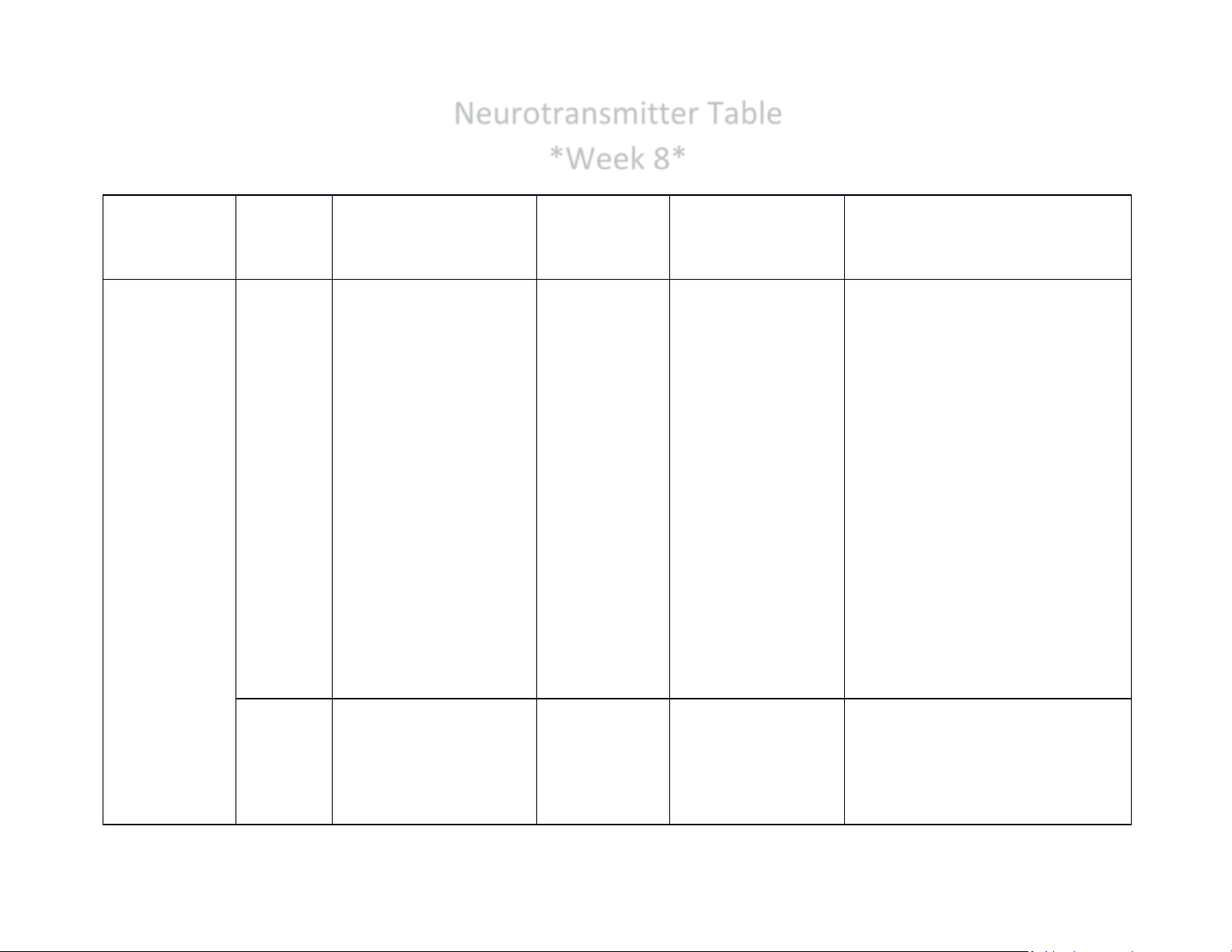
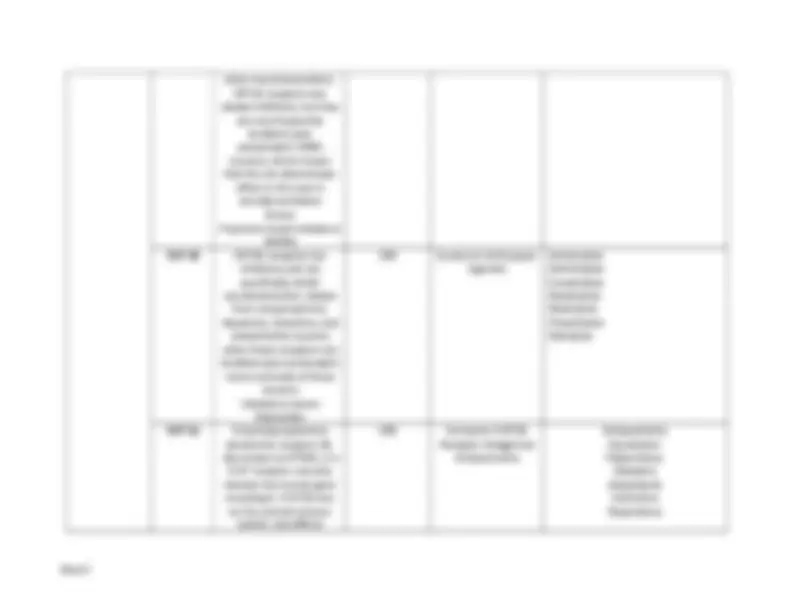
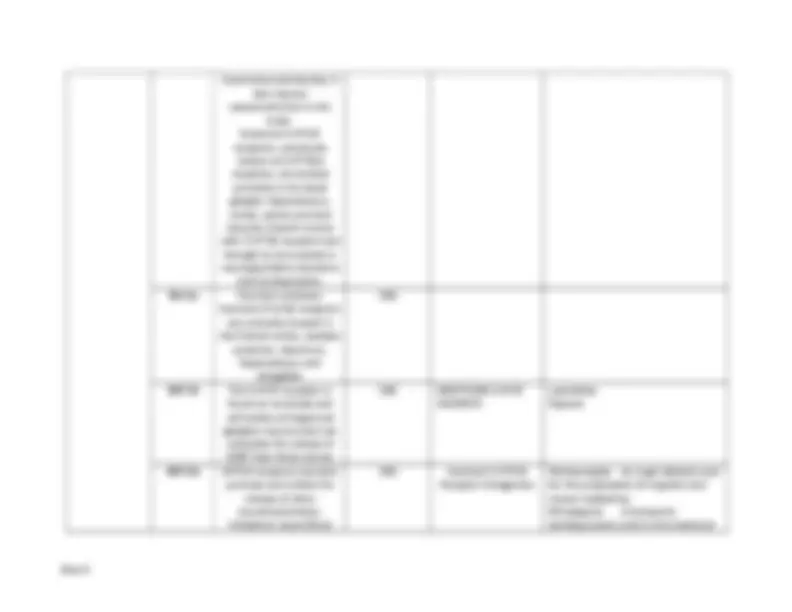
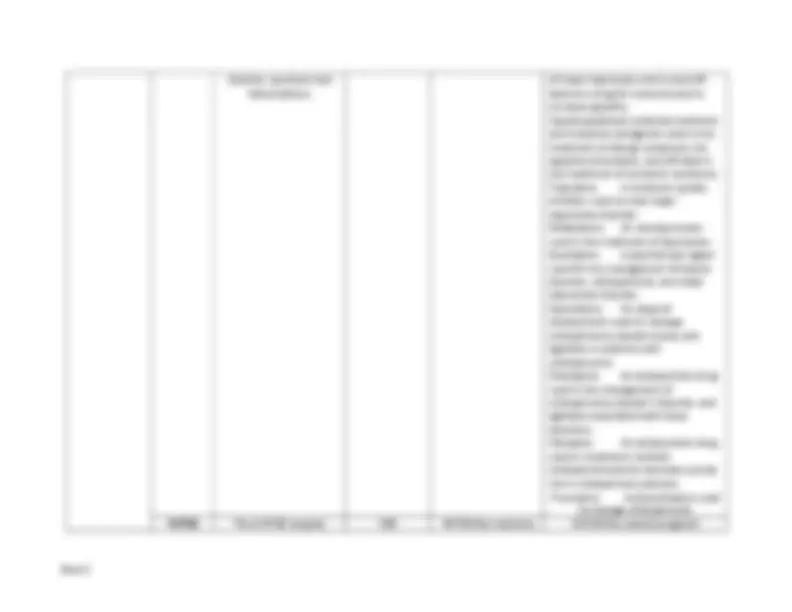
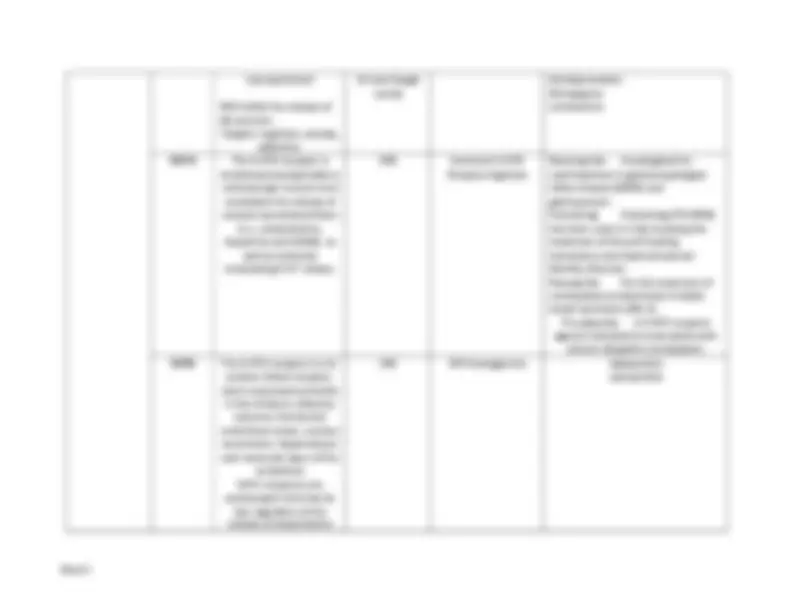
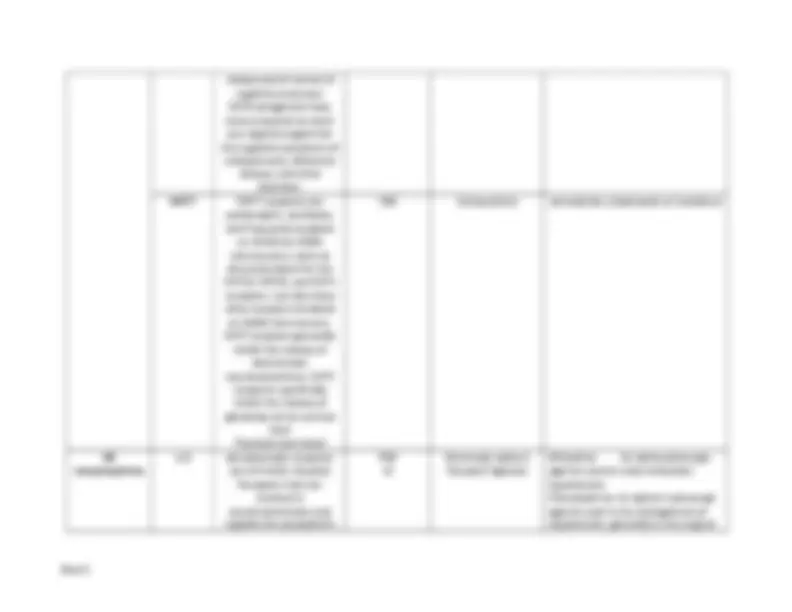
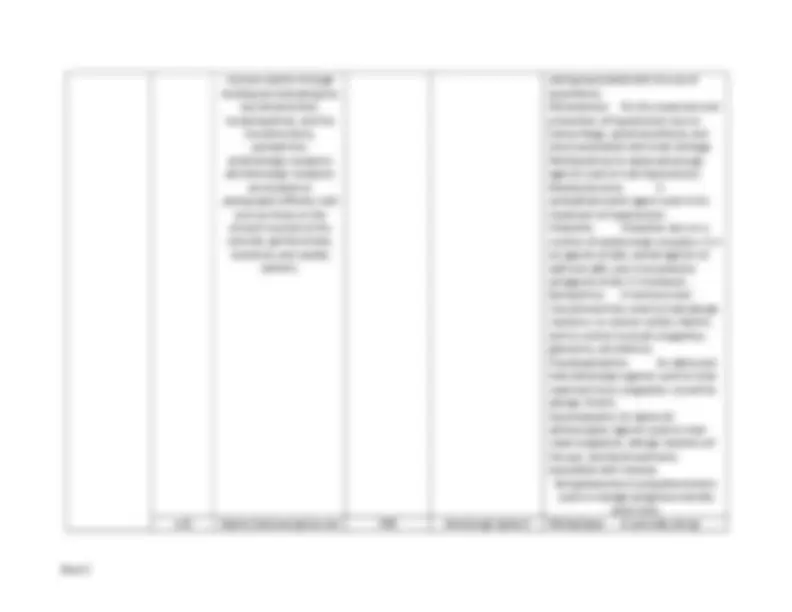
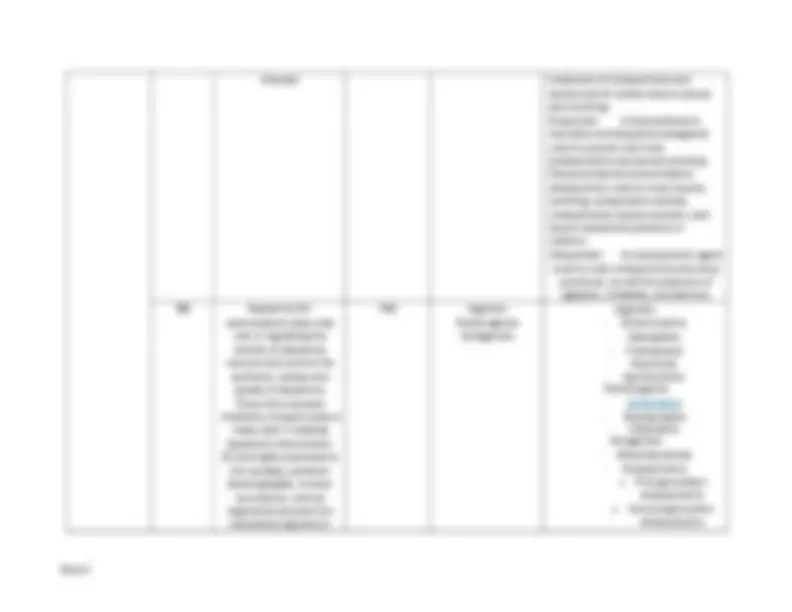
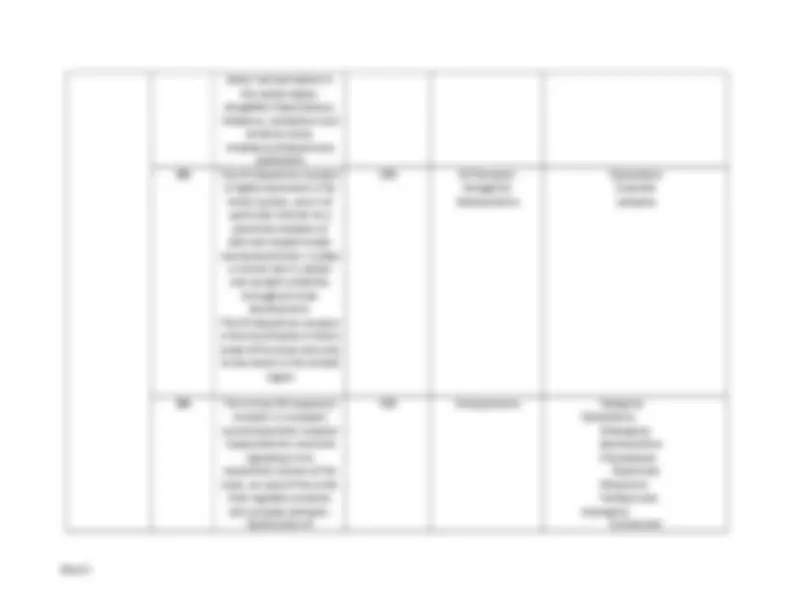
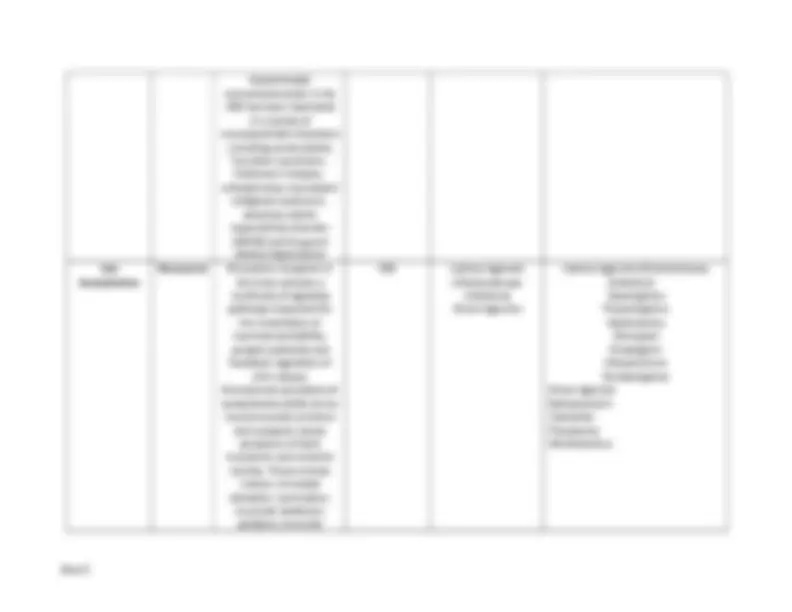


Study with the several resources on Docsity

Earn points by helping other students or get them with a premium plan


Prepare for your exams
Study with the several resources on Docsity

Earn points to download
Earn points by helping other students or get them with a premium plan
Community
Ask the community for help and clear up your study doubts
Discover the best universities in your country according to Docsity users
Free resources
Download our free guides on studying techniques, anxiety management strategies, and thesis advice from Docsity tutors
An overview of the distribution and functions of ampa and nmda receptors in the central nervous system (cns). Ampa receptors are abundant and widely distributed in regions like the hippocampus, cortex, and amygdala, while nmda receptors play a critical role in learning, memory, and spatial memory. The document also discusses the localization and functions of other neurotransmitter receptors in the cns, such as gaba, serotonin, norepinephrine, dopamine, acetylcholine, and histamine receptors. It highlights the involvement of these receptors in various neuropsychiatric disorders and the pharmacological agents that target them. The comprehensive coverage of the major neurotransmitter systems in the cns makes this document a valuable resource for understanding the neurobiological basis of brain function and dysfunction.
Typology: Exams
1 / 17

This page cannot be seen from the preview
Don't miss anything!










Neuro transmitter Receptor Subtype Location/Function/Effects /symptoms of excess or deficit if applicable Distribution (ie: CNS/PNS, GI, vascular) Drug classes that target this neurotransmitter or receptor Specific medications that target this neurotransmitter or receptor Glutamate AMPA α-Amino- 3 - hydroxy- 5 - methyl- 4 - isoxazolepropionic acid (AMPA)-type glutamate receptors (AMPARs) mediate the majority of fast excitatory synaptic transmission in the brain. AMPA receptors are abundant and widely distributed in the central nervous system. Hippocampus, outer layer of the cortex, basal ganglia, olfactory regions, lateral septum, and amygdala of the CNS are all enriched with GluA1, GluA2, and GluA subunits. CNS AMPA Receptor Antagonists Perampanel MNDA N-methyl-D-aspartate (NMDA) receptors represent one of the ligand-gated non-selective ionotropic glutamate receptors (iGluRs), which
NMDA receptors are found in both synaptic and extrasynaptic NDMA Glutamate Antagonist NDMA Glutamate Antagonist- Memantine Phencyclidine Ketamine Dextromethorphan Dextromethadone
are present in high density within the hippocampus and the cerebral cortex N-methyl-D-aspartate (NMDA) receptors, a family of L-glutamate receptors, play an important role in learning and memory, and are critical for spatial memory demonstrated deterioration in NMDA receptor subunit expression and function with advancing age locations on neurons. NMDA receptors also can be found on neurons in early stages prior to synaptogenesis, where they may be involved in migration and differentiation. Extrasynaptic NMDA receptors typically are associated with contacts with adjacent processes such as axons and glia GABA GABA a Limbic system GABAa is considered in fast synaptic inhibition. GABAa receptors are located throughout the central nervous system Benzodiazepines Neuroactive Steroids Zolpidem Zaleplon Zopiclone Eszopiclone Allepregnanolone Serotonin 5HT 5HT 1a 5HT1A receptors are located on GABA interneurons in the prefrontal cortex 5HT1A receptors can promote the release of CNS partial 5 - HT1A-R agonists buspirone, gepirone, and tandospirone
locomotion and anxiety. It also induces vasoconstriction in the brain. Serotonin 5-HT1D receptors, previously known as 5-HT1Dα receptors, are located primarily in the basal ganglia, hippocampus, cortex, spinal cord and vascular smooth muscle cells. 5 - HT1D receptors are thought to be involved in neuropsychiatric disorders such as depression. 5ht 1e Function-unknown Serotonin 5 - ht1E receptors are primarily located in the frontal cortex, caudate putamen, claustrum, hippocampus, and amygdala.
5HT 1F The 5-HT1F receptor is found on terminals and cell bodies of trigeminal ganglion neurons and can modulate the release of CGRP from these nerves.
Lasmiditan Reyvow 5HT 2A 5HT2A receptors can both promote and inhibit the release of other neurotransmitters. Imbalance cause Mood CNS Serotonin 5-HT2A Receptor Antagonists Methysergide An ergot alkaloid used for the prophylaxis of migraine and cluster headaches. Mirtazapine A tetracyclic antidepressant used in the treatment
disorder pyschosis and hallucinations of major depression and is used off- label as a drug for insomnia and to increase appetite. CyproheptadineA combined serotonin and histamine antagonist used in the treatment of allergic symptoms, for appetite stimulation, and off-label in the treatment of serotonin syndrome. Trazodone A serotonin uptake inhibitor used to treat major depressive disorder. Nefazodone An antidepressant used in the treatment of depression. Quetiapine A psychotropic agent used for the management of bipolar disorder, schizophrenia, and major depressive disorder. Ziprasidone An atypical antipsychotic used to manage schizophrenia, bipolar mania, and agitation in patients with schizophrenia. Olanzapine An antipsychotic drug used in the management of schizophrenia, bipolar 1 disorder, and agitation associated with these disorders. Clozapine An antipsychotic drug used in treatment resistant schizophrenia and to decrease suicide risk in schizophrenic patients. Promazine A phenothiazine used to manage schizophrenia. 5HT2B The 5 - HT2B receptor CNS 5HT2B Non selective 5HT2B Non selective agonist
Imbalance linked to Obesity, psychosis, and mood disorders agitation associated with these disorders. Mirtazapine A tetracyclic antidepressant used in the treatment of major depression and is used off- label as a drug for insomnia and to increase appetite. Promazine A phenothiazine used to manage schizophrenia. Propiomazine Propiomazine is largely used for its antihistamininc sleep inducing effects in treating insomnia. Minaprine For the treatment of depression Tramadol A centrally-acting opioid agonist and SNRI (serotonin/norepinephrine reuptake inhibitor) used for the management of moderate to severe pain in adults. Clozapine An antipsychotic drug used in treatment resistant schizophrenia and to decrease suicide risk in schizophrenic patients. Methysergide An ergot alkaloid used for the prophylaxis of migraine and cluster headaches. Sertindole An atypical antipsychotic indicated in the treatment of schizophrenia. 5HT 3 Ligand gated ion channels. highest levels in the brain stem- Targets: decreases
(chemoreceptor trigger zone) PNS: Antiemetics Antidepressants Antiemetics: ondansetron, granisetron, dolasetron, palonosetron
nausea/emesis Will inhibit the release of NE and Ach- Targets: cognition, anxiety, addiction. GI tract (vagal nerve) Antidepressants: Mirtazapine vortioxetine 5HT 4 The 5-HT4 receptor is located postsynaptically to serotonergic neurons and modulates the release of several neurotransmitters (i.e., acetylcholine, dopamine and GABA), as well as indirectly modulating 5 - HT release. CNS Serotonin 5-HT Receptor Agonists Naronapride Investigated for use/treatment in gastroesophageal reflux disease (GERD) and gastroparesis. Felcisetrag Felcisetrag (TD-8954) has been used in trials studying the treatment of Enteral Feeding Intolerance and Gastrointestinal Motility Disorder. Renzapride For the treatment of constipation-predominant irritable bowel syndrome (IBS-C). Prucalopride A 5-HT4 receptor agonist indicated to treat adults with chronic idiopathic constipation. 5HT6 The 5-HT6 receptor is a G- protein-linked receptor, and is expressed primarily in the striatum, olfactory tubercle, frontal and entorhinal cortex, nucleus accumbens, hippocampus and molecular layer of the cerebellum 5HT6 receptors are postsynaptic and may be key regulators of the release of acetylcholine CNS 5HT6 antagonists Idalopirdine Latrepirdine
nervous system through binding and activating the neurotransmitter, norepinephrine, and the neurohormone, epinephrine. α-Adrenergic receptors α1-Adrenergic receptors are located on postsynaptic effector cells such as those on the smooth muscles of the vascular, genitourinary, intestinal, and cardiac systems. setting associated with the use of anesthetics. Metaraminol For the treatment and prevention of hypotension due to hemorrhage, spinal anesthesia, and shock associated with brain damage Methoxamine An alpha adrenergic agonist used to treat hypotension. Mephentermine A sympathomimetic agent used in the treatment of hypotension. Cirazoline Cirazoline acts on a number of α adrenergic receptors. It is an agonist of α1A, partial agonist of α1B and α1D, and a nonselective antagonist of α2. It is believed... Epinephrine A hormone and neurotransmitter used to treat allergic reactions, to restore cardiac rhythm, and to control mucosal congestion, glaucoma, and asthma. Pseudoephedrine An alpha and beta adrenergic agonist used to treat nasal and sinus congestion, as well as allergic rhinitis. Oxymetazoline An alpha-1A adrenoceptor agonist used to treat nasal congestion, allergic reactions of the eye, and facial erythema associated with rosacea. Benzphetamine A sympathomimetic used to manage exogenous obesity short term. α 2 Alpha- 2 adrenoceptors are CNS Adrenergic alpha- 2 Methyldopa A centrally-acting
implicated in diverse physiological functions in the heart, and presynaptic alpha-2 receptors inhibit the release of norepinephrine and other neurotransmitters in both the central and peripheral nervous systems PNS Receptor Agonists alpha-2 adrenergic agonist used to manage hypertension alone or in combination with hydrochlorothiazide, and to treat hypertensive crises. Amitraz Amitraz is a non-systemic acaricide and insecticide. It was generated in 1969 by the Boots Co. in England. Amitraz presents insect repellent effects and hence, it can be used as... Medetomidine Medetomidine is a synthetic compound used as a surgical anesthetic and analgesic. It is normally found as its hydrochloride salt, medetomidine hydrochloride. Medetomidine is an intravenously available alpha- 2 adrenergic agonist.... Romifidine Romifidine is a veterinary drug utilized as a sedative primarily in large animals, most frequently horses. It is also used less commonly in a wide variety of other animal species.... Detomidine Used as a large animal sedative, primarily in horses. Dipivefrin A prodrug of epinephrine used in ophthalmic solutions to reduce intraocular pressure in chronic open-angle glaucoma. Brimonidine An alpha- 2 adrenergic agonist used to treat glaucoma and ocular hypertension, as well as facial erythema in rosacea.
disorder treatment of schizophrenia and anxiety and to relieve severe nausea and vomiting. Droperidol A butyrophenone derivative and dopamine antagonist used to prevent and treat postoperative nausea and vomiting. ChlorpromazineA phenothiazine antipsychotic used to treat nausea, vomiting, preoperative anxiety, schizophrenia, bipolar disorder, and severe behavioral problems in children. Haloperidol An antipsychotic agent used to treat schizophrenia and other psychoses, as well as symptoms of agitation, irritability, and delirium D2 Dopamine D2- autoreceptors play a key role in regulating the activity of dopamine neurons and control the synthesis, release and uptake of dopamine. These Gi/o-coupled inhibitory receptors play a major part in shaping dopamine transmission. D2 are highly expressed in the caudate, putamen (basal ganglia), nucleus accumbens, ventral tegmental area and the substantia nigra and in CNS Agonists Partial agonist Antagonists Agonists:
lower concentrations in the septal region, amygdala, hippocampus, thalamus, cerebellum and cerebral cortex. Imbalance-Shizophrenia parkinsons D3 The D3 dopamine receptor is highly expressed in the limbic system, and is of particular interest as a potential mediator of aberrant dopaminergic neurotransmission. It plays a critical role in cellular and synaptic plasticity throughout brain development. The D3 dopamine receptor is found primarily in limbic areas of the brain and only at low levels in the striatal region CNS D3 Receptor Antagonist Antipsychotics Ziprasidone Sulpiride Loxapine D4 The human D4 dopamine receptor is a synaptic neurotransmitter receptor responsible for neuronal signaling in the mesolimbic system of the brain, an area of the brain that regulates emotion and complex behavior. Dysfunction of CNS Antipsychotics Clozapine Ziprasidone Olanzapine Apomorphine Pramipexole Ropinirole Flibanserin Pardoprunox Asenapine Sumanirole
fasciculation, diarrhea, and blurry vision. Nicotinic The nicotinic acetylcholine receptor is a transmembrane allosteric protein that mediates transduction of chemoelectric signals throughout the nervous system by opening an intrinsic ionic channel Nicotine receptors are located throughout the brain including in the cortex, hippocampus, basal ganglia, thalamus, cerebellum, basal forebrain, and brainstem, as well as the retina and cochlea. CNS Nicotinic Agonists Nicotine A stimulatory alkaloid found in tobacco products that is often used for the relief of nicotine withdrawal symptoms and as an aid to smoking cessation. Varenicline A partial agonist at nicotinic acetylcholine receptors used as an aid in smoking cessation. Lobeline Investigated for use/treatment in addictions. GTS- 21 Investigated for use/treatment in alzheimer's disease and schizophrenia and schizoaffective disorders. Epibatidine Not Available Encenicline Encenicline has been investigated for the treatment of Cognition, Schizophrenia, Alzheimer's Disease, Cardiac Repolarization, and Central Nervous System Diseases. Histamine Histamine receptors are widely distributed in the body, with one or more receptors expressed to significant levels in neuronal, smooth muscle (vascular, gastric and bronchial), blood, heart, immune system and endocrine system. Histamine receptors are 7 - transmembrane receptors Histamine receptors are widely distributed in the body, with one or more receptors expressed to significant levels in neuronal, smooth muscle (vascular, gastric Antihistamine Clemastine Cetirizine Terfenadine Buclizine Doxylamine Dexbrompheniramine Triprolidine
which mediate cellular responses to the biogenic amine histamine. Histamine may be released as a transmitter in neuronal preparations or as a mediator of an inflammatory response by mast cells. This can trigger an immune system response resulting in symptoms such as diarrhea, shortness of breath, headaches, or skin irritation and bronchial), blood, heart, immune system and endocrine system. Melatonin Melatonin is the neurotransmitter secreted by the pineal gland, and acts especially in the suprachiasmatic nucleus to regulate circadian rhythms CNS melatonin multimodal melatonin receptor agonist Melatonin 1 and 2 receptor agonist melatonin multimodal Agomelatine melatonin receptor agonist Ramelteon Melatonin 1 and 2 receptor agonist Tasimelteon